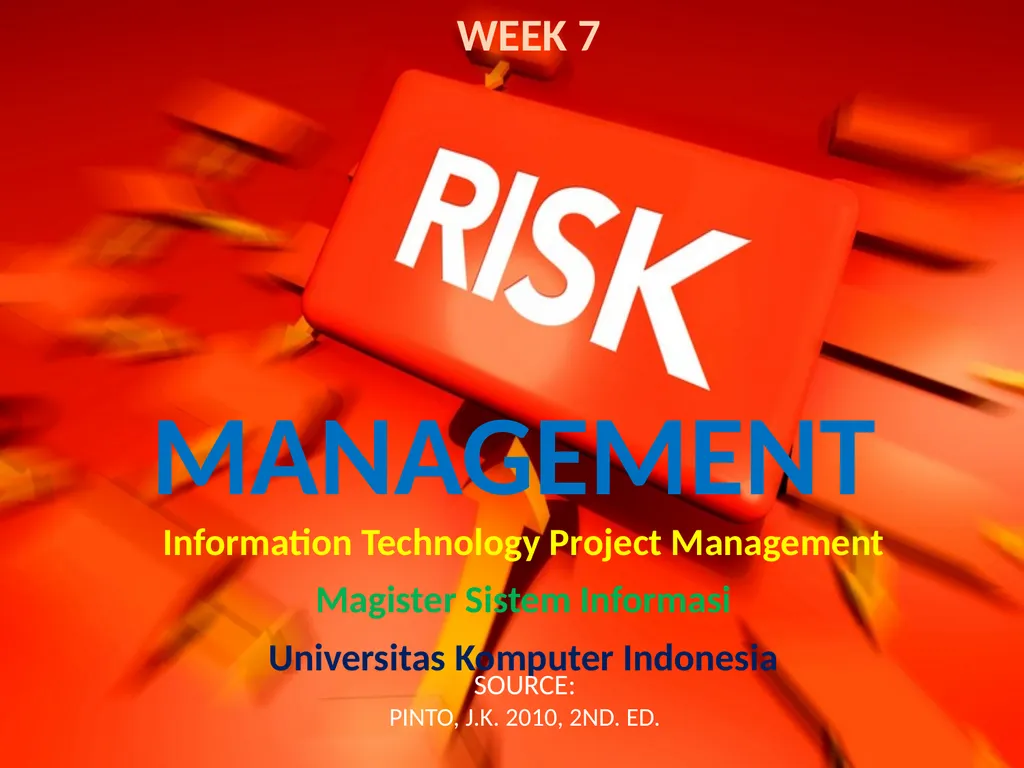
MANAGEMENT WEEK 7 Information Technology Project
Author: danika-pritchard | Published: 2025-06-27
Description: MANAGEMENT WEEK 7 Information Technology Project Management Magister Sistem Informasi Universitas Komputer Indonesia Source: Pinto, j.k. 2010, 2ND. ED. PROJECT Project Risk, is any possible event that can negatively affect the viability of
Download Presentation
Download the PPT/PDF: Download
Transcript:
Loading transcript…